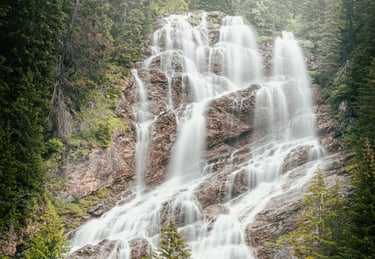Natural Resources and Their Importance
Natural resources can be divided into renewable and non renewable resources
GUIDES AND TIPS
Greenly World
8/1/20234 min read
Earth's Essentials: Natural Resources and Our Needs
Everything we need to survive originates from natural resources - materials found in nature that we use to meet our needs. Natural resources provide us with food, fuel, building materials and more.
Table of contents:
Renewable and Non Renewable
Resource Recovery
Natural resources can be divided into two categories, renewable and non renewable.
Renewable resources
Examples of renewable resources are trees, sunlight and water which can replenish themselves over time. One can grow a tree, rain happens eventually some places more than others, and sun will appear eventually, so although they can be overused and depleted, they can rejuvenate, however sustainable management is essential.
Nonrenewable resources
Examples of nonrenewable resources are fossil fuels and minerals, which cannot reproduce themselves. These are over time slowly depleted as we humans use them, and once they are gone, other alternatives have to used since they won't return.
Here are some examples on natural resources and what they're used for. Nb: These are not all natural resources listed.
While natural resources meet our basic needs, extracting and utilizing them can also cause problems.
Using resources releases pollution into the air, land and water. Extracting resources from ecosystems can disrupt or destroy habitats and reduce biodiversity. Buildup of greenhouse gases from activities like burning fossil fuels contributes to climate change.
Nevertheless, there are ways and methods to reduce the impacts.
Resource recovery
Resource recovery and recycling conserves natural resources by reusing materials that would otherwise become waste. Recycling 2,000 pounds (907 kg) of paper saves 7,000 gallons (26 500 L) of water and 380 gallons (1438.5L) of oil, for example. Using recovered aluminum cans saves 95% of the energy needed to make the same amount of aluminum from bauxite ore. A good example of recycled aluminium is a sustainable and/or insulated water bottle
We can also reduce the amount of resources we consume by limiting purchases, reusing items and composting organic waste. We're already slowly switching to renewable energy sources, such as solar and wind, which helps reduce pollution caused by fossil fuel use.
Protecting and sustainably managing natural habitats also ensures plants, animals and ecosystems can continue providing valuable services like cleaning air and water.
A good example of place with natural resources is South Carolina. South Carolina has a wealth of natural resources, from forests that provide lumber and paper to clay deposits and mineral resources like granite, vermiculite and limited gold. The state has no known coal or natural gas reserves.
Overall, balancing resource use with sustainable practices like recycling, reuse and renewable energy will allow us to meet our needs while safeguarding natural resources for future generations. With careful stewardship, Earth's essentials can continue providing for people and nature alike.
FAQ:
Q. What are natural resources?
A. Natural resources are materials and components originating from the environment that are valuable and helpful for humans to survive and thrive. Examples include water, air, soil, plants, animals, minerals, and fossil fuels.
Q. What are the two main types of natural resources?
A. The two main types of natural resources are:
Renewable resources: These can regenerate naturally over time, like sunlight, water, wind and plants.
Non-renewable resources: These cannot renew themselves within a human lifespan, like fossil fuels and minerals. They are considered finite resources.
Q. Why are natural resources important?
A. Natural resources are important for:
Supporting all life on Earth by providing essentials like food, water, air and shelter.
Serving as raw materials and energy sources for industries, businesses and the global economy.
Maintaining natural habitats and ecosystems that supply critical "services" like waste and water purification.
Q. How can we conserve natural resources?
A. Some key ways to conserve natural resources include:
Reducing consumption through techniques like reusing and recycling materials.
Transitioning to renewable sources of energy like solar and wind.
Practicing sustainable agriculture and harvesting techniques.
Using resources efficiently and avoiding waste.
Protecting natural habitats and ecosystems to ensure their services continue.
Q. What harm can overusing natural resources cause?
A. Overusing natural resources can lead to:
Non-renewable resources running out, threatening supply chains and industries that depend on them.
Depletion of renewable resources below sustainable levels, threatening regeneration.
Environmental damage like pollution, habitat destruction, loss of biodiversity and climate change.
Strain on ecosystem services that humans depend on for survival.
Q. What alternatives are there to non-renewable resources?
A. The main alternatives to non-renewable resources like fossil fuels are:
Renewable sources of energy like solar, wind, hydro and geothermal.
Increased use of recycled materials that can replace raw materials from non-renewable sources.
Greater efficiency and reduced consumption levels that lessen the demand for non-renewable resources.
Sources:
https://scdhec.gov/sites/default/files/Library/OR-0689.pdf
American
Forest & Paper Association
Aluminum Association
“The Quest for Less: A Teacher’s Guide to Reducing, Reusing and Recycling,” 2005 edition, U.S. EPA








Contacts
greenlyworld@hotmail.com
